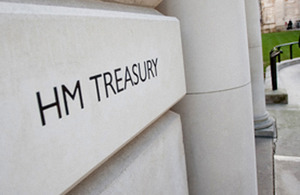Chancellor Osborne to repay part of our First World War debt
Government to pay off part of the nation’s First World War debt, as part of a redemption of bonds stretching as far back as the eighteenth century.

The Chancellor of the Exchequer, George Osborne is today announcing that the government will pay off part of the nation’s First World War debt, as part of a redemption of bonds stretching as far back as the eighteenth century.
The Treasury will redeem £218m of debt from the 4% Consolidated Loan on 1 February 2015. “4% Consols” was first issued by then Chancellor Winston Churchill in 1927, partly to refinance National War Bonds originating from the First World War. The Debt Management Office estimates that the nation has paid £1.26bn in total interest on these bonds since 1927.
These National War Bonds were first issued in 1917 as part of an unprecedented effort by the government to raise money to finance the ongoing cost of the First World War, which started with the first issue of the first war loan in November 1914. Large publicity campaigns were employed throughout the war to attract the general public to make a patriotic investment. And for good measure, the bonds also paid out an attractive rate of interest of five per cent.
Today’s announcement is the first repayment of an undated gilt of this sort by any Chancellor in 67 years. Around £2 billion of First World War debt remains, which is one graphic illustration of the legacy of this war on our nation and the long term effects of high debt. The government is looking into the practicalities and value for money of repaying this outstanding debt in full.
In addition to the war bonds, some of the debt being repaid in redeeming 4% Consols dates as far back as the eighteenth century. In 1853, then Chancellor Gladstone consolidated, among other things, the capital stock of the South Sea Company originating in 1711, which had collapsed in the infamous South Sea Bubble financial crisis of 1720. And in 1888, Chancellor George Goschen converted bonds first issued in 1752 and subsequently used to finance the Napoleonic and Crimean Wars, the Slavery Abolition Act (1835) and the Irish Distress Loan (1847). This debt will be repaid through the redemption of the 4% Consols.
The Treasury takes into account a number of factors when deciding whether to redeem its stock of undated bonds. But the Treasury is confident that it can deliver value for money to current and future tax payers by refinancing this borrowing now at lower rates than the 4% it is currently paying. The government is only able to do this today because interest rates are lower today, thanks to the confidence in the plan that the government has put in place to cut borrowing and create a resilient economy.
There are currently 11,200 registered holders of the bond. 7,700 investors hold less than £1000 nominal, and 92% of holders own less than £10,000 each. This is one of eight undated government bonds currently outstanding. This will be the first time that a Chancellor has redeemed an undated gilt of this sort in more than 60 years.
The Chancellor of the Exchequer, George Osborne said:
I am delighted to be able to announce today that we will repay part of the country’s First World War Debts. We are only able to take this action today thanks to the difficult decisions that this government has taken to get a grip on the public finances. The fact that we will no longer have to pay the high rate of interest on these gilts means that most important of all, today’s decision represents great value for money for the taxpayer. We will go on working through our plan that is gripping the public finances and delivering a brighter economic future.